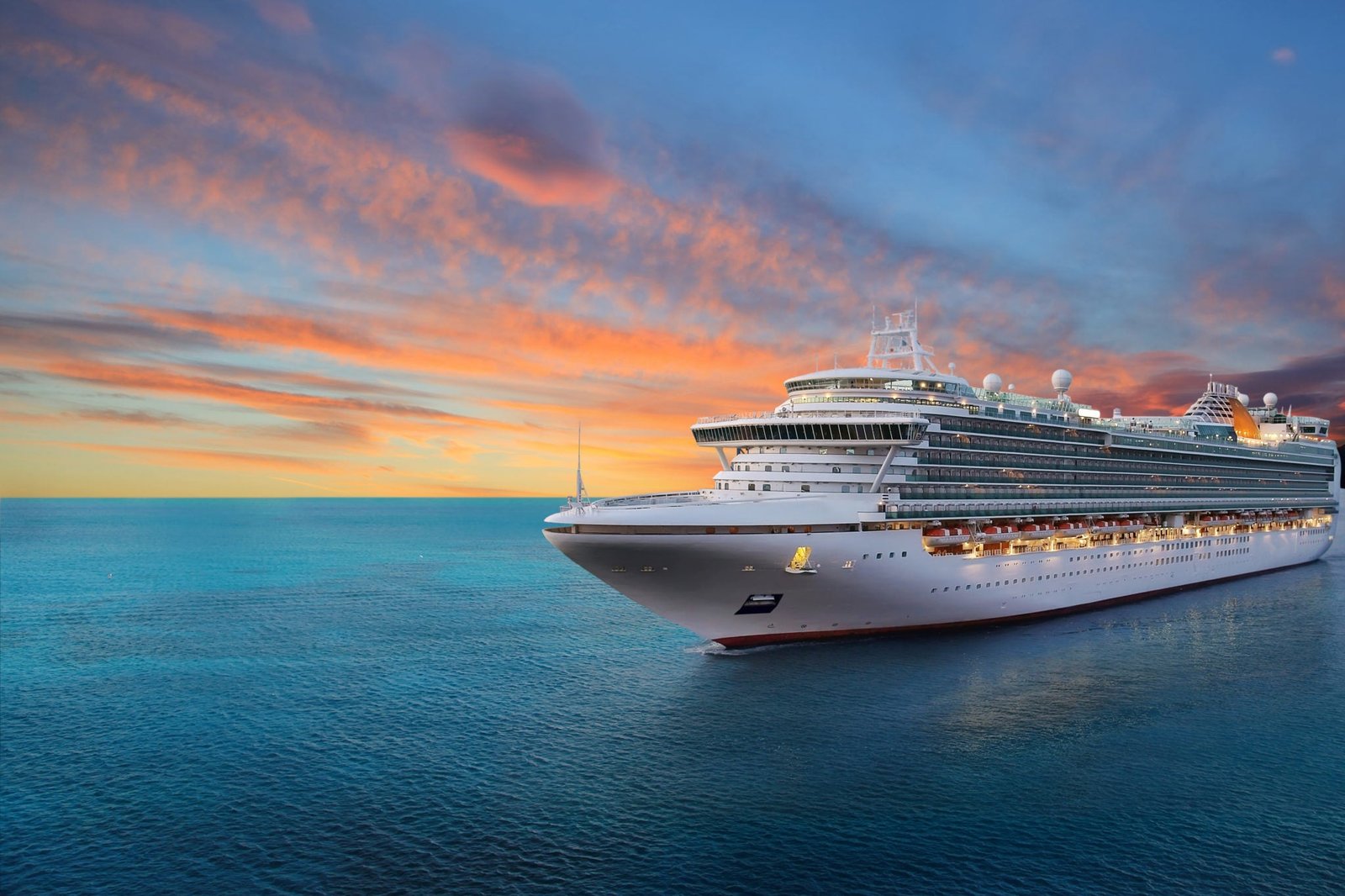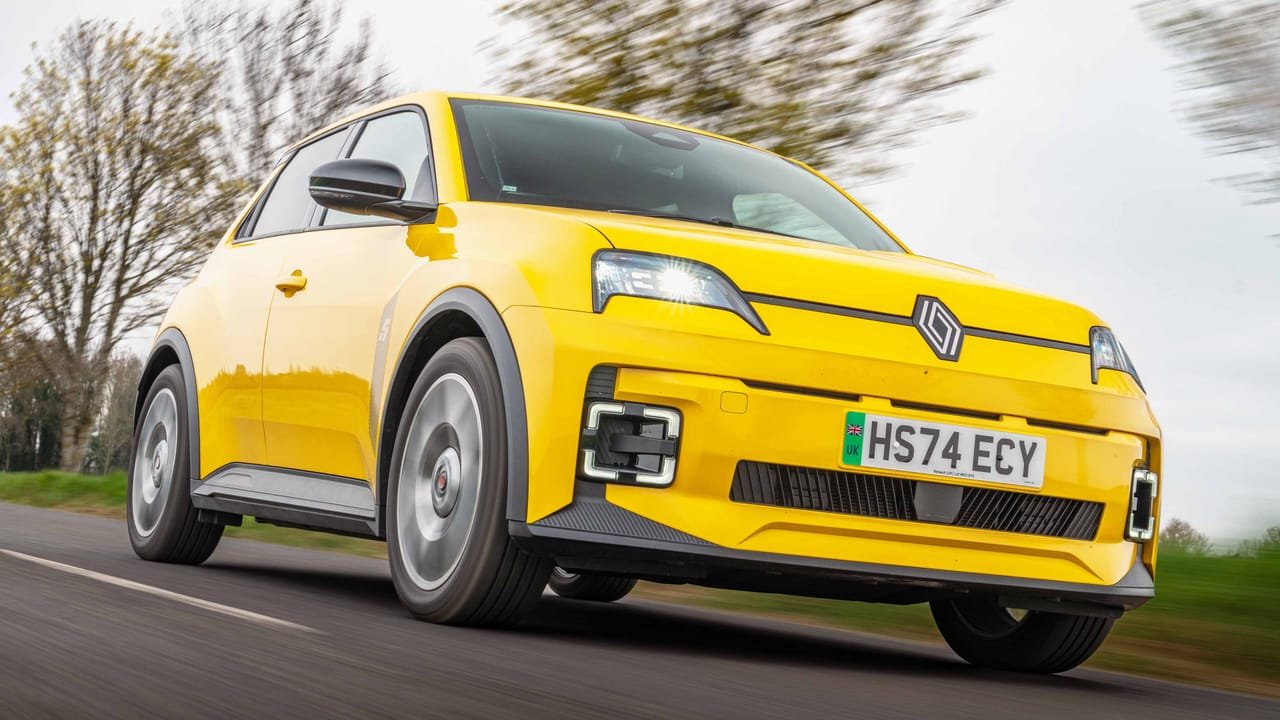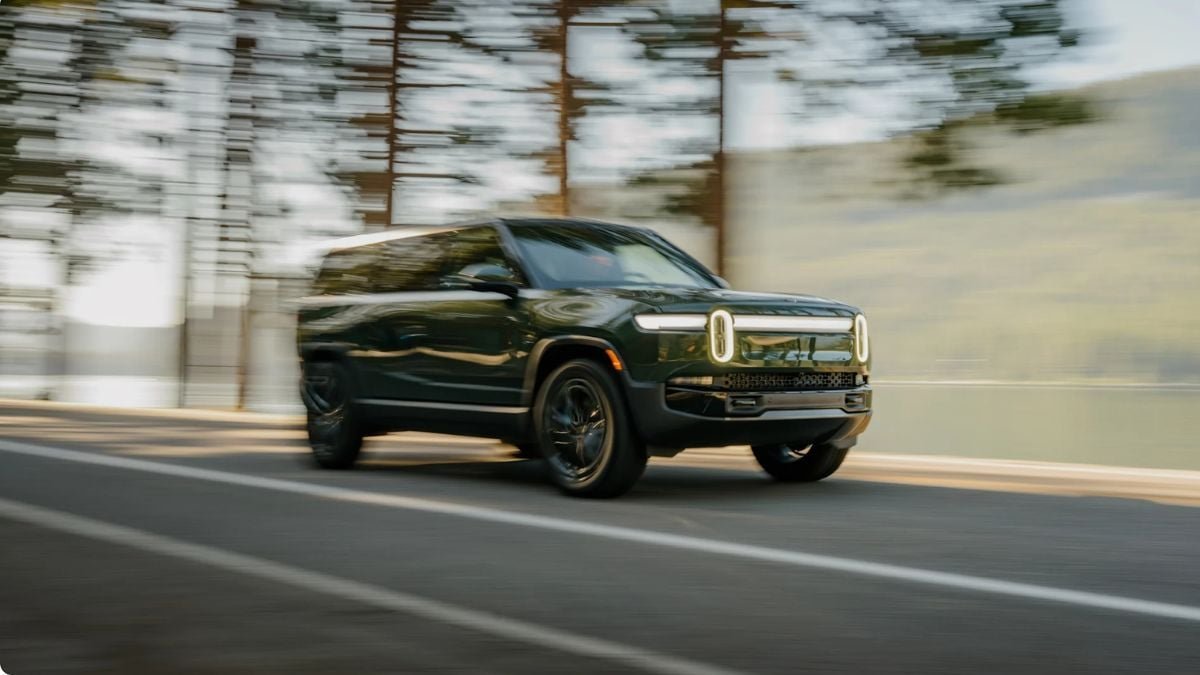Travel Journals
The 17 Best Websites To Book Cruises at the Cheapest Prices [2025] – Upgraded Points

Travel Journals
Renault 5 – long-term review – Report No:3 2025

How does the Renault 5 handle proper road trips?
We’re three months into life with our long-term Renault 5, and we’ve already managed to cross the 3,000-mile mark. Not bad for a little electric city car.
And no, we haven’t been moonlighting as an inner-city Uber. In fact, big chunks of those miles have been put on with proper road trips that I’d usually dread in an EV. First was that fuss-free run home from the factory in Douai, then came a trip from London to Liverpool and back in a single day, before a similar motorway run up to North Yorkshire but with a sensible single overnight stay before the journey back. So, how has the R5 been getting on?
Advertisement – Page continues below
Well, the first thing to note is just how easy it is to set off on a drive in the 5 (I’m a poet, etc). Of course, this shouldn’t really be a difficult thing to get right, but so many manufacturers have fluffed it with new active safety requirements and tech integration. Jump in the R5, switch the car on using the slightly hidden dash-mounted button and my phone immediately connects to wireless Apple CarPlay every time. And because it’s running the Google built-in system and I’m signed in to my account, the nav on the 10.1in touchscreen already has my recent destination searches from Google Maps on my phone in and ready to go.
Once on the move, neither the speed limit warning nor the emergency lane assist is that intrusive, but they can both be turned off by double-tapping a proper physical button that’s mounted within easy reach to the right of the steering wheel. This activates your custom safety settings that you’ll set up as soon as you take delivery of the car.
Even our mid-range Techno trim car gets adaptive cruise control, and on the motorway the R5 feels just as grown up as it did in town. This is a properly refined little car that filters out most road and wind noise. Comfortable recycled denim seats, too.
Max charging speed is quoted as 100kW, so on these longer trips I’ve mostly been visiting 150kW+ chargers and have quite reliably seen over 90kW going into the 5 until it reaches 80 per cent SoC. On every single journey so far, it has connected quickly and charged without fault, with the Google nav quickly working out where is best to stop on a longer run, and even updating with how many plugs are free at each charging station. Should I be touching wood while writing that everything is rosy with the UK’s charging network?
Advertisement – Page continues below
So, the R5 isn’t just a city car. Even on these longer runs (with the air conditioning working overtime in the recent heatwave) it’s proving to be properly efficient. It’ll sit at 70mph quite comfortably and still manage an average of 4.1 miles per kWh, which means just over 200 miles between stops on a road trip. And because the battery is fairly small at 52kWh it’s topped up again by the time I’ve used the facilities and grabbed a coffee. In fact, the Ionity station at Leeds Skelton Lake was so far from the service station building I’m sure I had a full battery before I’d even walked into the McDonald’s. And yes, other unhealthy service station stops are available. Worth noting here that Ionity loses points in the charge provider wars for still not offering contactless payment at lots of its plugs. Urgh.
In reality though I’ve not really had to think about the R5 and its road trip charging. The car plans the route and I generally follow its advice. Or, if I need to stop sooner I’ll use the inbuilt nav to search for other options. This was particularly useful on the drive home from Liverpool, where I required a quick 20-minute power nap and was able to offer the car the same luxury.
Oh, and the jaunt up to North Yorkshire was most notable not for the charging, but for the fact that I finally got to spot more R5s out in the wild. Two were yellow with a black roof and the third was green, again with a contrast black roof. I still prefer the single colour, but it’s great to see that customers aren’t shying away from the brighter options. It’s a brilliantly fun looking car and deserves a yellow or green. Given the price and the efficiency I’m surprised the R5 hasn’t taken over London just yet, but I’m sure it won’t be long until they’re everywhere…
Travel Journals
I Bought a $250 Adapter Because Rivian Said I Could Charge at Tesla Stations, but After Two Road Trips and Multiple Failures, I Feel Like I Was Misled

This evening, I was scrolling through the “RIVIAN Electric Vehicles Discussion” group on Facebook and came across a post that immediately grabbed my attention. As EV adoption grows, one of the biggest questions many Rivian owners face isn’t about performance or range; it’s about charging. And when you’re on the road with only 30 miles of range left, the difference between clear communication and misleading assumptions could mean the difference between a smooth trip and a total panic.
Marc, a Rivian R1S owner, shared a frustrating story that I think many EV drivers, especially new ones, can relate to. It wasn’t about the truck itself, but rather about the charging ecosystem Rivian said he’d be able to use.
Here’s exactly what Marc wrote:
“When I purchased my R1S, I was told that I could charge at Tesla chargers, so I bought the adapter from Rivian for $250. I went to my first Tesla chargers on I-95 in Connecticut and found out that I can only charge at the Tesla Superchargers. I’m on another road trip this weekend and went to the Tesla Supercharger in Lee, Massachusetts. Of course, that didn’t work, and when I called Rivian roadside support with only 30 miles of range left, I was told that only certain Tesla Superchargers are available to Rivians. I then found an Electrify America Supercharger, and that didn’t work either. I finally found a Mercedes Supercharger, and fortunately, that worked great. Long story short, I’m pretty upset that Rivian’s sales claim that I can charge at Tesla chargers was not accurate.”
Let’s pause there.
If you’ve never driven an EV before, you might assume, understandably, that a Tesla charging adapter means you can plug into any Tesla charger and be on your way. But as Marc discovered the hard way, that’s just not how it works. And even some EV veterans have found themselves tripped up by how inconsistent or poorly explained this compatibility can be.
Not All Tesla Superchargers Are Created Equal
While it’s technically true that Rivian’s can charge at some Tesla Supercharger stations, only select sites are currently open to non-Tesla vehicles. These locations are visible within the Tesla app, which shows “Magic Dock” compatibility or NACS support based on your vehicle. But here’s the catch: unless someone explicitly tells you to check the Tesla app and shows you how to filter for compatible stations, you might assume that the $250 adapter unlocks all Superchargers. And that’s where owners like Marc are feeling misled.
It’s a complaint we’re seeing more and more, where owners feel that the promise of convenient charging turned into a scavenger hunt with no guarantee of success. And when you add in situations like this Rivian owner whose R1S took over an hour to charge at a Level 3 station and still needed service, it’s easy to see why trust in EV charging infrastructure is a work in progress.
Charging Support, Or Charging Confusion?
Marc’s experience didn’t just stop at Tesla. When Electrify America also failed him, he was left scrambling to find alternatives. Thankfully, a Mercedes-branded charging station saved the day, but it shouldn’t take multiple failed attempts to get a full battery.
This reminds me of another recent story we covered, where a Rivian owner had their vehicle plugged in overnight and woke up to a dead battery, leading to confusion and concern about whether their system was functioning properly at all.
Community to the Rescue
While Marc’s frustration is absolutely justified, the Rivian community didn’t leave him hanging. Several other owners chimed in under his post to offer advice and perspective, and their comments help illustrate the broader picture that new owners need to hear.
Ken responded: “You can charge at Tesla Destination Chargers, but you need a different adapter than the Tesla Supercharger adapter. As for the Superchargers, only use the Tesla app to see which ones are available.”
That distinction between Destination Chargers (usually slower, AC-based chargers at hotels and businesses) and Tesla Superchargers (fast DC stations for long-distance travel) is critical. And unfortunately, it’s one that’s often glossed over in casual sales conversations.
Vincent added: “Get the Tesla app, which will tell you which Tesla Superchargers are compatible with the adapter. My Rivian delivery team was clear on this, and the Rivian message app is also a good resource. Have Fun.”
That’s helpful, if you know to ask. And if you don’t, you could easily end up in a situation like Marc’s.
Lastly, Jann shared a much smoother experience: “Drove to California and back from Florida, 6,000 total miles. The Rivian trip planner took me exactly where I needed to charge. Piece of cake.”
Jann’s story shows that long-distance road trips in a Rivian can absolutely go off without a hitch, but only if you use the right tools and have the right expectations.
Why the Misunderstanding Happens
Rivian, like many EV startups, is navigating a rapidly changing infrastructure landscape. Tesla’s charging network is the gold standard in the U.S., and with the rollout of the NACS (North American Charging Standard), more and more non-Tesla EVs will have access to that network. But it’s not universal yet, and owners need to know that upfront.
Rivian does offer guidance through their delivery advisors and message app, but not everyone gets the same level of support. Some customers get a walkthrough of the Tesla app and are told exactly how to identify compatible Superchargers. Others, like Marc, are simply told, “You can charge at Tesla stations”, and left to figure it out themselves.
That gap in communication is what turns excitement into disappointment.
And when you combine that with issues like a Rivian owner who charged for 11 hours and only got 70 miles or others paying to support Tesla while secretly resenting it, it becomes clear that frustration around charging is as much about expectations as it is about execution.
Journalist Insight: Why This Matters
As an automotive journalist watching this unfold, I think there’s a bigger takeaway here beyond just one person’s road trip mishap. We’re witnessing the early growing pains of a charging transition that will define how EVs are adopted by the masses.
Marc did everything right. He bought the adapter. He followed the promise. He was proactive. But the information pipeline failed him.
And when even Electrify America, the supposed fallback, doesn’t deliver, it’s no wonder owners are left wondering if they made the right call. Some are even stuck charging for hours with no improvement in range, or waking up to a drained battery and no clear answer.
A Moral for All EV Owners
So here’s the moral: if you’re going to drive an EV, especially one from a startup brand, you need to become your own advocate. Learn the charging landscape, get the apps, read the forums, and double-check everything the salesperson tells you. Because the difference between a seamless journey and a weekend ruined by failed chargers might come down to something as small as clicking the right icon in an app.
And if you’re on the other side, working in EV sales or delivery, this is your reminder that what you say (or don’t say) matters. Clarity builds confidence. Confusion builds resentment.
Your Turn
Have you ever had a charging experience that went south because of poor information? Do you think EV brands are doing enough to prepare buyers for real-world charging?
Let me know in the comments, I’d love to hear what worked for you, what didn’t, and how we can all help new owners avoid feeling like Marc did.
Narek Hareyan is a young automotive journalist with experience in a golf cart dealership and an interest in the automotive industry. Follow Narek on X for daily news coverage about cars.
Travel Journals
Road trip toys for 2 year olds cheap – emsnow.com
-

 Brand Stories2 weeks ago
Brand Stories2 weeks agoBloom Hotels: A Modern Vision of Hospitality Redefining Travel
-

 Brand Stories1 week ago
Brand Stories1 week agoCheQin.ai sets a new standard for hotel booking with its AI capabilities: empowering travellers to bargain, choose the best, and book with clarity.
-

 Destinations & Things To Do2 weeks ago
Destinations & Things To Do2 weeks agoUntouched Destinations: Stunning Hidden Gems You Must Visit
-

 Destinations & Things To Do1 week ago
Destinations & Things To Do1 week agoThis Hidden Beach in India Glows at Night-But Only in One Secret Season
-

 AI in Travel2 weeks ago
AI in Travel2 weeks agoAI Travel Revolution: Must-Have Guide to the Best Experience
-

 Brand Stories1 month ago
Brand Stories1 month agoVoice AI Startup ElevenLabs Plans to Add Hubs Around the World
-

 Brand Stories4 weeks ago
Brand Stories4 weeks agoHow Elon Musk’s rogue Grok chatbot became a cautionary AI tale
-

 Asia Travel Pulse1 month ago
Asia Travel Pulse1 month agoLooking For Adventure In Asia? Here Are 7 Epic Destinations You Need To Experience At Least Once – Zee News
-

 AI in Travel1 month ago
AI in Travel1 month ago‘Will AI take my job?’ A trip to a Beijing fortune-telling bar to see what lies ahead | China
-

 Brand Stories2 weeks ago
Brand Stories2 weeks agoContactless Hospitality: Why Remote Management Technology Is Key to Seamless Guest Experiences

